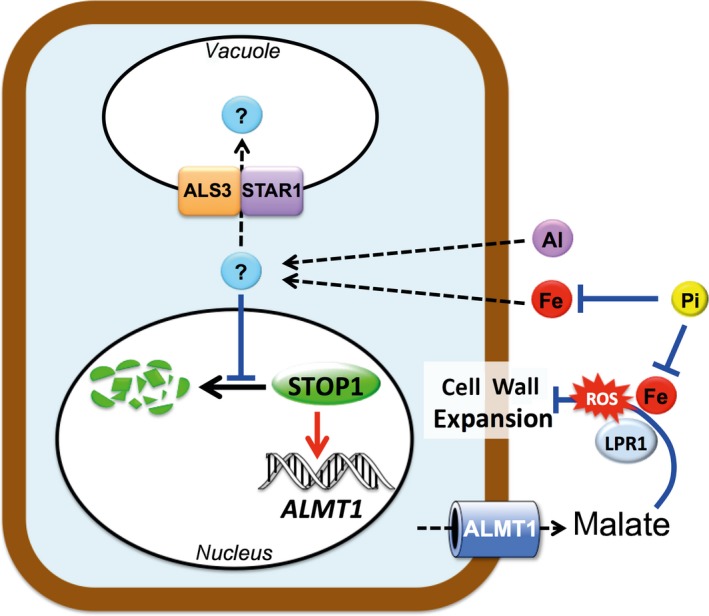Figure 7.

Model depicting the roles of Fe and Al in STOP1 signaling and root growth in relation to phosphate (Pi) availability.
Phosphate reversibly inactivates Fe and Al by forming a complex with them. Under –Pi conditions and low pH, Fe, Al or another unknown molecule accumulates in the cell where it decreases proteasomal degradation of STOP1, thereby stimulating the accumulation of STOP1 in the nucleus; nuclear STOP1 activates the transcription of ALMT1. The tonoplast‐anchored ALS3 and STAR1 proteins pump the Fe, Al or unknown molecule from the cytosol to the vacuole compartment, thereby decreasing its concentration in the cytosol. This reduces the accumulation of STOP1 in the nucleus and therefore the transcription of ALMT1. The ALMT1 transporter exudes malate in the apoplast where, together with Fe and the ferroxidase LPR1, they generate reactive oxygen species (ROS) that inhibit cell wall expansion. Exuded malate also chelates Al3+, therefore preventing its toxicity (not presented in the scheme). Red arrows, activation; black arrow, proteasomal degradation; blue blunt arrows, repression; dashed arrows, transfer between compartments.
